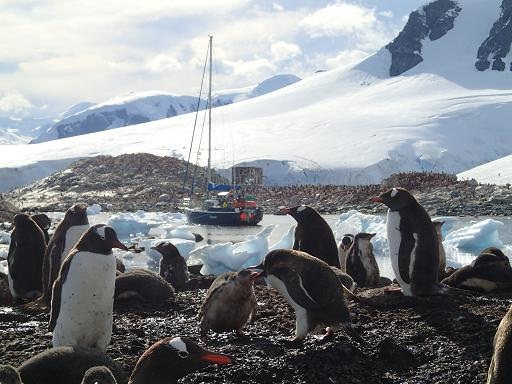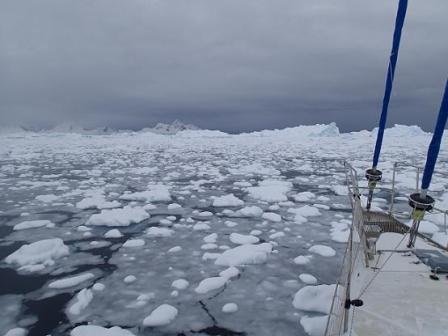Two ASC adventurers collect data on whales and penguins while at sea in Antarctica
My husband and I, along with 2 friends, decided to come to Antarctica by sailboat. It’s actually a sailboat that my husband built and that we now live in as our home. So I guess I can call Antarctica home for the moment. Coming to Antarctica by sailboat is a bit like a road trip. You can stop when you want; you can spend 1, 2, 3, or four days or even a week in a place if you really like it. If you don’t like a place then you can just move on. It also has its restrictions. We are in a small boat of 40ft and the Antarctic Peninsula is full of high mountains. Those mountains continue into the sea, which means the waters around the peninsula are quite deep. A small boat like us cannot anchor in deep waters, so there are limited places where we can spend the night. Also, Antarctica has way more snow than anyone can ever imagine and everywhere the glaciers run straight into the sea. We cannot anchor near a glacier, because it can calve at any time and
the resulting wave can be disastrous. Also glaciers tend to be iceberg factories and we try to avoid them at all costs.
While we are here in Antarctica, we are also helping Julie Hagelin collect data on Whales and Penguins. So far with the whales we have been very lucky and on days that we are travelling, we have seen many of them. Two days ago we had six separate sitings of whales! At the beginning of the trip it was hard for us to identify the species, but now we are getting better. We even had 2 humpback whales less than 30 feet from our boat! Julie is trying to determine if baleen whales can smell, so every time we see a whale, we record the direction that the whales are swimming and the wind direction. We also record other weather data, such as the temperature of the air and water, the atmospheric pressure, and the wind speed. This is relatively easy for us on our sailboat, as we have instruments that record all of this data.
idea was to watch how they pass each other – left eye to left eye or right eye to right eye. Her original idea was to watch the penguins as they go to sea to get food for their young. Early in the season, when their chicks are small and there is a lot of snow, they tend to form paths. Her original idea was to identify these paths and record the passing direction. Unfortunately we are here in Antarctica towards the end of the season, so the chicks are larger and some parents have stopped feeding and much of the snow if gone. Julie and I have exchanged emails, so we are trying to modify
some of the data gathering to what I am able to see. I found one location where there was a steep slope and there was still snow, so I watched the Gentoo penguins there at two different occasions and was able to collect some data. It’s a good reminder on how you have to be flexible in the field.
Our trip is starting to come to an end. We only have a few more days in Antarctica, and then we have to wait for a good weather window in order to cross the famous Drake Passage. That will take us 4 or 5 days and then it’s another 2 until we are back safe at home in Ushuaia, the southernmost city in the world in Argentina.


